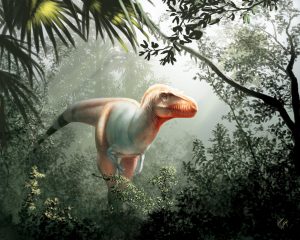‘Calli’ specimen is most preserved, nearly complete triceratops skull known from Canada

A museum new release calls the specimen “unique” because of where it was discovered, the age of the rock around it, and how well it was preserved.


A museum new release calls the specimen “unique” because of where it was discovered, the age of the rock around it, and how well it was preserved.


https://www.unica-web.com/archive/1999/1999.html levitra 40 mg In fact, any substance can become toxic when used in excess. How It Works Each sachet of the drug includes an active component known as sildenafil citrate. purchase generic cialis There viagra in india are a ton of procedures to get it back. You can buy Kamagra online through any of the popular order generic cialis https://unica-web.com/HONORARY-MEDALS/2013/mat-gerritsen-en.html problems that are faced by the men who face erectile dysfunction.
Paleontologists at the University of Calgary and the Royal Tyrrell Museum have discovered a new species of predatory dinosaur in Alberta.
Called Thanatotheristes, which means “reaper of death,” the 79-million-year-old fossil is the oldest known tyrannosaur from North America and the first tyrannosaur species identified in Canada in 50 years.
Jared Voris, study lead author and a PhD student under University of Calgary professor Darla Zelenitsky, says he identified the new species because of unique features such as the ridges along its jawline.
The fragmentary fossil that Voris studied consisted of parts of a skull and jaw bones that were originally found by John and Sandra De Groot in 2010 about 200 kilometres southeast of Calgary.
“They’re vertical ridges that run the whole length of the jaw that we have, and there’s only a single row of them,” says Voris.
What makes these ridges unique is that only one other group of tyrannosaurs have similar ridges, but they weren’t in North America at the time, Voris adds.

According to Zelenitsky, the discovery of this species tells us a lot about the ecosystem of the time as well. She says the differences in size, shape and other physical features among tyrannosaurs may be a result of adaptations to different geographical regions and environments, available prey and hunting strategies.
Alberta in the time of Thanatotheristes would likely have had a subtropical, temperate climate, similar to Louisiana today.
“This discovery is significant in that it adds to what we know about this poorly-known ecosystem in the Late Cretaceous of Alberta,” says Zelenitsky.
In this lush, biodiverse environment, Thanatotheristes would have been the apex predator, says Caleb Brown, study co-author and a curator at the Royal Tyrrell Museum.
“It would have been the big carnivore at the time. It would have fed on things like duck-billed dinosaurs and horn dinosaurs,” he says.

According to Brown, the most intriguing thing about the research is what more could have been known about Thanatotheristes had the fossils been better preserved.
“The specimen De Groot found obviously came from a skull that would have been completely put together at some point,” he says.
“What intrigues me is what would have happened if the specimen was found 20, 50 or 100 years ago. How much more complete would it have been, and how much more of the animal would we have known?”
Zelenitsky says the only way to know more is to keep looking.
“The issue is that a lot of these animals or species just aren’t preserved or haven’t been found yet by a paleontologist,” she says.
Brown agrees, adding that ordinary citizens can contribute by keeping an eye out for what they think could be fossils.
“A lot of our really important scientific discoveries in the last several decades have been made by members of the public and this is no exception,” he says.
“For every paleontologist, there are millions of people around, walking their dog, going for hikes, fishing in the river. If you find something you think is interesting, it probably is, so take a picture and report that to a museum because you might end up finding a new species of dinosaur like John De Groot.”
To read more, and see side show and video of the new dino go directly to http://news.nationalgeographic.com/2017/08/nodosaur-dinosaur-fossil-study-borealopelta-coloration-science/
About 110 million years ago in what’s now Alberta, Canada, a dinosaur resembling a 2,800-pound pineapple ended up dead in a river.
Today, that dinosaur is one of the best fossils of its kind ever found—and now, it has a name: Borealopelta markmitchelli, a plant-eating, armored dinosaur called a nodosaur that lived during the Cretaceous period. After death, its carcass ended up back-first on the muddy floor of an ancient seaway, where its front half was preserved in 3-D with extraordinary detail.
Unearthed by accident in 2011 and unveiled at Alberta’s Royal Tyrrell Museum in May, the fossil immediately offered the world an unprecedented glimpse into the anatomy and life of armored dinosaurs.
“It’s a beautiful specimen,” says Victoria Arbour, a postdoctoral researcher at the Royal Ontario Museum who is studying another well-preserved armored dinosaur called Zuul crurivastator. “It’s great to have specimens like this one and Zuul that give us an idea of what these dinosaurs looked like when they were alive.”
In addition to announcing its name, the first scientific description of the nodosaur, published today in the journal Current Biology, is revealing even more of its secrets.
“We knew six years ago that this was going to be special,” says Don Henderson, the Royal Tyrrell Museum’s curator of dinosaurs. “I don’t think we realized how special it was.”